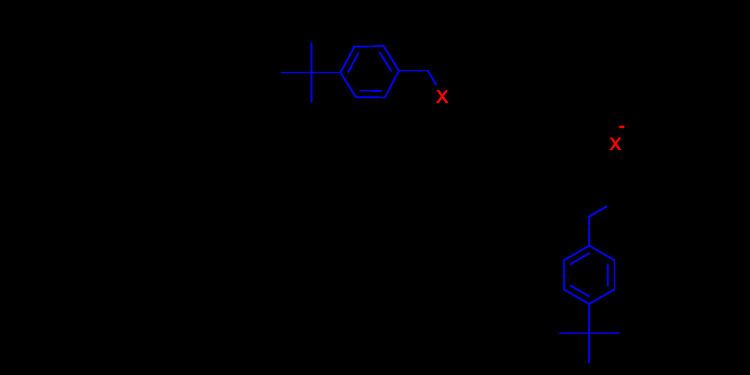 | ||
The Menshutkin reaction in organic chemistry converts a tertiary amine to a quaternary ammonium salt by reaction with an alkyl halide:
The reaction has been named after its discoverer, the Russian chemist Nikolai Menshutkin, who described the procedure in 1890. Depending on the source, his name (and the reaction named after him) is spelled as Menšutkin, Menshutkin or Menschutkin.
The reaction between amines and alkyl halogenides is hard to control, making alternative routes (for instance reductive amination) more attractive. However, when quaternary ammonium salts are the desired end product, this reaction becomes a more viable option. Yields are good and the reaction is easily performed. R1–R4 can but do not have to be identical. Some phase transfer catalysts (PTC) can be prepared according to the Menshutkin reaction, for instance the synthesis of triethyl benzyl ammonium chloride (TEBA) from triethylamine and benzyl chloride:
Reactions speed up with polar aprotic solvents and higher reaction temperatures. Leaving groups facilitate the reaction in the order chlorine < bromine < iodine.
Scope
In one particular macrocycle system the reaction rate is not only accelerated (150000 fold compared to quinuclidine) but the halide order is also changed:
The rate-acceleration is attributed to increased transition state stabilization due to hydrogen bonding in the macrocyclic pocket.
Chlorinated solvents, including dichloromethane, dichloroethane, and chloroform are competent electrophiles for the Menshutkin reaction, although the reaction with chloroform is slow. Even pyridines, which are considerably less nucleophilic than typical tertiary amines, are reported to react with dichloromethane at room temperature over a period of several days to weeks to give bis(pyridinium)methane salts. For this reason, use of chlorinated solvents, particularly dichloromethane, may be inadvisable when a tertiary amine is present in a reaction mixture and heating and/or extended reaction times are required.
